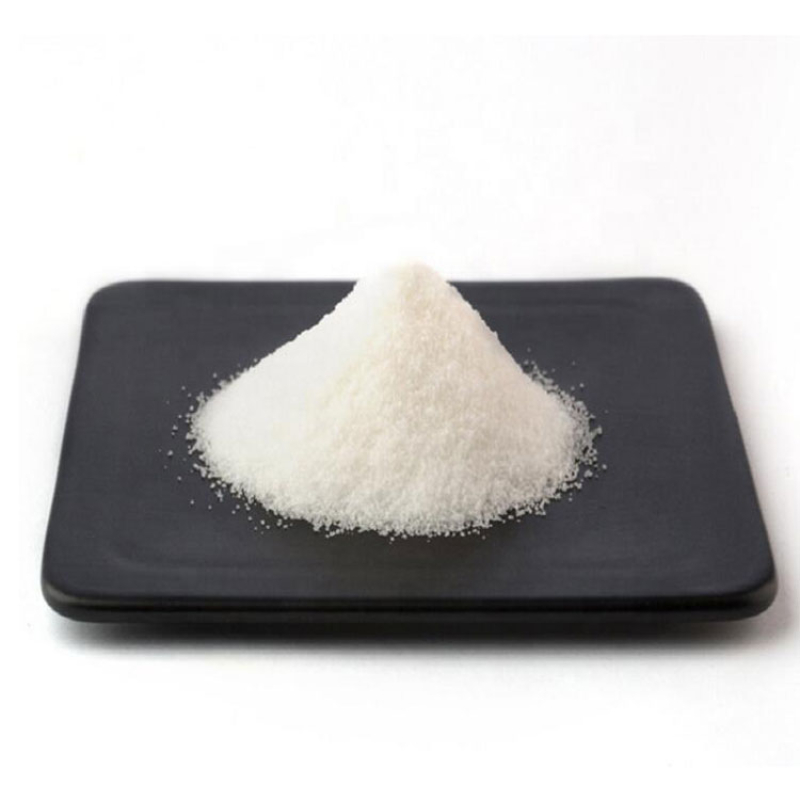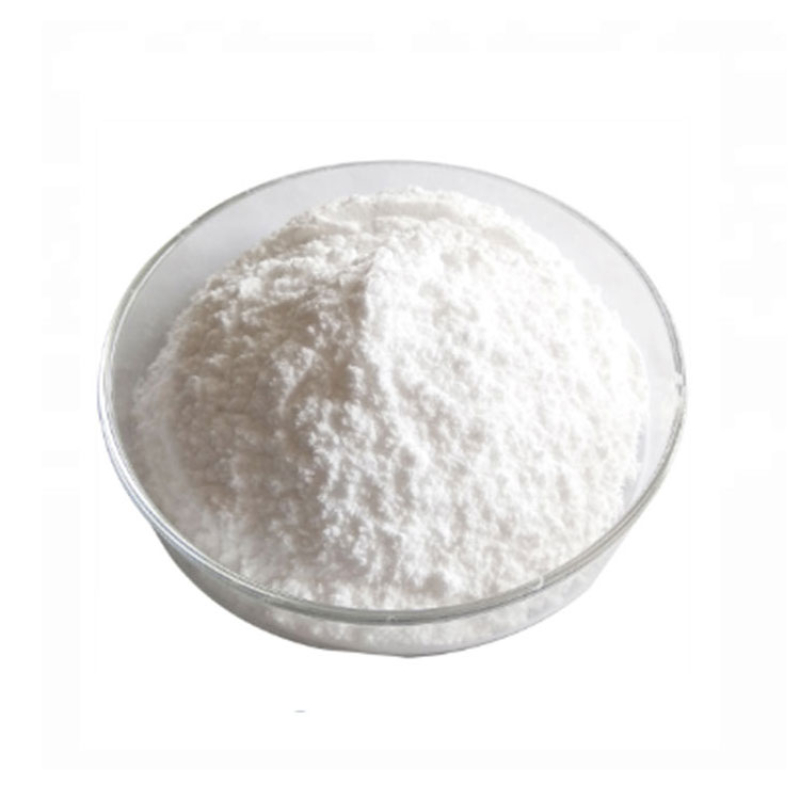Products Description of Tetrabutylammonium hydrogen sulfate CAS#32503-27-8Tetrabutyl quaternary ammonium salts are phase transfer catalysts with superior performance. Tetrabutylammonium hydrogen sulfate buffer salt system is often used as an aqueous mobile phase in reversed-phase liquid chromatography detection. However, the stability of the tetrabutylammonium hydrogen sulfate buffer salt system gradually decreases with the increase of tetrabutylammonium hydrogen sulfate concentration.
Contact Now
Products Description of Tetrabutylammonium hydroxide CAS#2052-49-5Tetrabutylammonium hydroxide is an organic compound with the chemical formula C16H37NO.
Contact Now
Products Description of Tetrabutylammonium iodide CAS#311-28-4Tetrabutylammonium iodide (TBAI) is a commonly used phase transfer catalyst that can increase the reaction rate or effectively promote a variety of chemical reactions. This reagent can be used as an iodine source to generate the iodide required for the reaction in situ, avoiding the use of some unstable and expensive iodides.
Contact Now
Products Description of Tetrabutylammonium hydroxide CAS#2052-49-5Tetrabutylammonium hydroxide is an organic compound with the chemical formula C16H37NO.
Contact Now
Products Description of 2-[(4-Aminophenyl)sulfonyl]ethyl hydrogen sulfate CAS#2494-89-5White crystals. Soluble in water, insoluble in ethanol, ether and benzene.
Contact Now
Products Description of Tetrabutylammonium Iodide COA#311-28-4Tetrabutylammonium iodide (TBAI) is a commonly used phase transfer catalyst that can increase the reaction rate or effectively promote a variety of chemical reactions. This reagent can be used as an iodine source to generate the iodide required for the reaction in situ, avoiding the use of some unstable and expensive iodides.
Contact Now
Products Description of Tetrabutylammonium Perchlorate CAS#1923-70-2Tetrabutylammonium perchlorate is used as a research compound, in medicine, and as an electrolyte in electrochemical gradeTetrabutylammonium perchlorate Chemical PropertiesMelting point 211-215 °Cdensity 1.0387 (rough estimate)refractive index 1.6800 (estimate)solubility acetonitrile: 0.1 g/mL, clear, colorlessform Crystalline Powdercolor WhiteWater Solubility Soluble in acetonitrile and ethanol.
Contact Now
Products Description of Tetrabutylammonium bromideCAS#1643-19-2Tetrabutylammonium bromide is a common chemical product on the market.
Contact Now
Products Description of Potassium Hydrogen Phthalate CAS#877-24-7Potassium Hydrogen Phthalate is an organic compound that appears as a white crystalline powder. It is stable in the air, soluble in water, and slightly soluble in alcohol.
Contact Now
Products Description of Tetrabutylammonium Bromide CAS#1643-19-2 Tetrabutylammonium bromide is a common chemical product on the market.
Contact Now
Products Description of Glucosamine sulfate CAS#14999-43-0D-glucosamine sulfate was first included in the 27th edition of the United States Pharmacopoeia and is a drug for the treatment of arthritis. Arthritis has become the world's number one disabling disease. With the intensification of arthritis pain and the obstruction of activity, it will lead to temporary or permanent loss of ability to work. It brings significant losses to society and the economy. D-glucosamine sulfate is the main matrix of joint cartilage and synovial fluid because of its high activity and easy absorption.
Contact Now
Products Description of Polyisobutylene CAS#9003-27-4Potassium sulfate (K2SO4) is a kind of chemical compounds that is commonly used in agriculture. The dominant application of potassium sulfate is as a fertilizer, which is commonly applied to offer both potassium and sulfur, thus improving the quality and yield of crops growing in soils that lack an adequate supply of this essential elements. Besides, the crude potassium sulfate is sometimes employed in the production of glass.
Contact Now
Products Description of Cobalt Sulfate Heptahydrate CAS#10026-24-1A common cobalt compound that appears as a blue crystalline solid and is soluble in water. In the air, it gradually loses its crystal water and becomes powdery. Cobalt sulfate heptahydrate is widely used in chemical experiments. It can be used as a catalyst in organic synthesis reactions. In addition, it can be used to prepare other cobalt compounds, such as cobaltates and cobalt oxides.
Contact Now
Products Description of Ammonium sulfate CAS#7783-20-2Ammonium sulfate, also known as ammonium sulfate, is the earliest nitrogen fertilizer produced and used at home and abroad. It is usually regarded as a standard nitrogen fertilizer with a nitrogen content of 20% to 30%. Ammonium sulfate is a salt of strong acid and weak base, and its aqueous solution is acidic. Ammonium sulfate is a nitrogen fertilizer and an acidic fertilizer among inorganic fertilizers. Long-term single use will cause soil acidification and hardening, which needs to be improved.
Contact Now
Products Description of Copper(II) sulfate CAS#7758-98-7 Copper sulfate is an inorganic compound. The inorganic industry uses it to make other copper salts such as cuprous chloride, cupric chloride, copper pyrophosphate, cuprous oxide, copper acetate, copper carbonate, etc. The common form of copper sulfate is crystals. Anhydrous copper sulfate is a white crystalline powder, which may also be light gray-green due to impurities. It is a soluble copper salt. The relative density is 3.603, and the solubility in water at 25°C is 23.05g.
Contact Now
Products Description of Sodium dodecyl sulfate CAS#151-21-3Sodium dodecyl sulfate (SDS), with the chemical formula C12H25NaO4S, is a potent anionic surfactant that is soluble in water and widely used for its exceptional emulsifying, foaming, and wetting properties. It is a white crystalline powder that plays a critical role in the formulation of detergents, cleaners, and personal care products, and is particularly instrumental in protein electrophoresis as a denaturing agent.
Contact Now
Products Description of Tin sulfate CAS#7488-55-3White or light yellow crystalline powder. Soluble in water, solubility 33g/100ml water at 35℃. Soluble in dilute sulfuric acid.Stannous sulfate Chemical PropertiesMelting point 360 °Cdensity 4,15 g/cm3vapor pressure 0Pa at 20℃storage temp. no restrictions.form SolidSpecific Gravity1.35color White to off-whitePH1.6 (50g/l, H2O, 20℃)Water Solubility 330 g/L (20 ºC)Merck 14,8790Exposure limitsACGIH: TWA 2 mg/m3NIOSH: IDLH 100 mg/m3; TWA 2 mg/m3Stability:Stable, but moisture sensitive.
Contact Now
Products Description of Ferrous sulfate heptahydrate CAS37782-63-0The chemical formula of ferrous sulfate is FeSO4. The most common one is ferrous sulfate FeSO4·7H2O containing seven crystal waters, commonly known as green vitriol. Light blue-green monoclinic crystal, density 1.898g/cm3, melts in crystal water at 64℃. Soluble in water, the aqueous solution is acidic. Gradually weathered in the air, and oxidized to yellow-brown basic iron salt.
Contact Now
Products Description of Hydroxychloroquine sulfate CAS#747-36-4Hydroxychloroquine sulfate is an antimalarial drug that also has anti-inflammatory, immunomodulatory and anticoagulant effects. Currently, hydroxychloroquine is mainly used in the treatment of rheumatoid arthritis, juvenile chronic arthritis, discoid lupus erythematosus and systemic lupus erythematosus, but the clinical effect is slow, often requiring 2 to 4 months. The pharmacological action of this drug is not very clear.
Contact Now
Products Description of Manganese sulfate CAS#7785-87-7Manganese sulfate (English: Manganese sulfate) is a light pink monoclinic fine crystal at room temperature. It is easily soluble in water and insoluble in ethanol. It starts to lose crystal water when heated above 200℃, loses most of the crystal water at about 280℃, becomes anhydrous salt melt at 700℃, and begins to decompose at 850℃, releasing sulfur trioxide, sulfur dioxide or oxygen.Manganese is an element of Group VII of the periodic table. Manganese in a free state is not found in nature.
Contact Now
Products Description of Direct Pigment Yellow 42 CAS#51274-00-1Barium sulfate has its chemical formula BaSO4. It is colorless or white orthorhombic crystals with relative molecular mass of 233.4, the relative density of 4.5 (15 ℃), the melting point of 1580 ℃, and the Refractive index of 1.637. Upon being heated to 1149 ℃, it will become monoclinic crystalline when the refractive index is 1.649. It is almost insoluble in water with the solubility being 0.00022 at 18 ℃ and 0.0041 at 100 ℃.
Contact Now
Products Description of Sodium sulfate CAS#7757-82-6Sodium sulfate is an important chemical raw material and the main raw material for producing chemical products such as sodium sulfide and sodium silicate. Sodium sulfate is also called glauber's salt, anhydrous sodium sulfate, and anhydrous sodium sulfate. White monoclinic crystals are fine crystals or powders. Relative density is 2.68, melting point is 884℃. Soluble in water, and the aqueous solution is neutral. Soluble in glycerol, insoluble in ethanol, exposed to air, it easily absorbs water to become hydrated sodium sulfate.
Contact Now
Products Description of Copper(II) sulfate pentahydrate CAS#7758-99-8Copper sulfate pentahydrate (chemical formula: CuSO4·5H2O) is blue vitriol, blue triclinic crystal, easy to weather in dry air, lose 4 molecules of crystal water when heated to 190℃, and become anhydrous salt at 258℃. Toxic. Soluble in water, insoluble in ethanol. Can be used for pesticides, harmful if swallowed, irritating eyes and skin, and can have long-term adverse effects on the aquatic environment.Copper sulfate crystals are beautiful blue crystals in plate or short columnar shape with a beautiful blue color.
Contact Now
Products Description of Sodium hydrogen ferric DTPA CAS#12389-75-2White powder.Sodium hydrogen ferric DTPA Chemical Propertiesdensity 1.607[at 20℃]Water Solubility 113g/L at 30℃LogP-11.9EPA Substance Registry SystemFerrate(2-), [rel-[N(R)]-N-[2-[bis[(carboxy-.kappa.O)methyl]amino-.kappa.N]ethyl]-N-[2-[(S)-[(carboxy-.kappa.O)methyl](carboxymethyl)amino-.kappa.N]ethyl]glycinato(5-)-.kappa.N,.kappa.O]-, sodium hydrogen (1:1:1), (PB-7-13-12564)- (12389-75-2) Factory and Equipment ShowFast delivery timeInventory 2-3 working days New production 7-10 working days
Contact Now






![2-[(4-Aminophenyl)sulfonyl]ethyl hydrogen sulfate CAS#2494-89-5](https://d3rnfhc14zcmdf.cloudfront.net/cdn/ff/zZzg_lRqIZ9Z-CjQBN9JQD7mHmr_8o1Ac1pA77EgT-I/1718527026/public/styles/chanpinzhutu/public/2024-06/Chlorobutanol_58.jpg?itok=G46_f_7M)



























